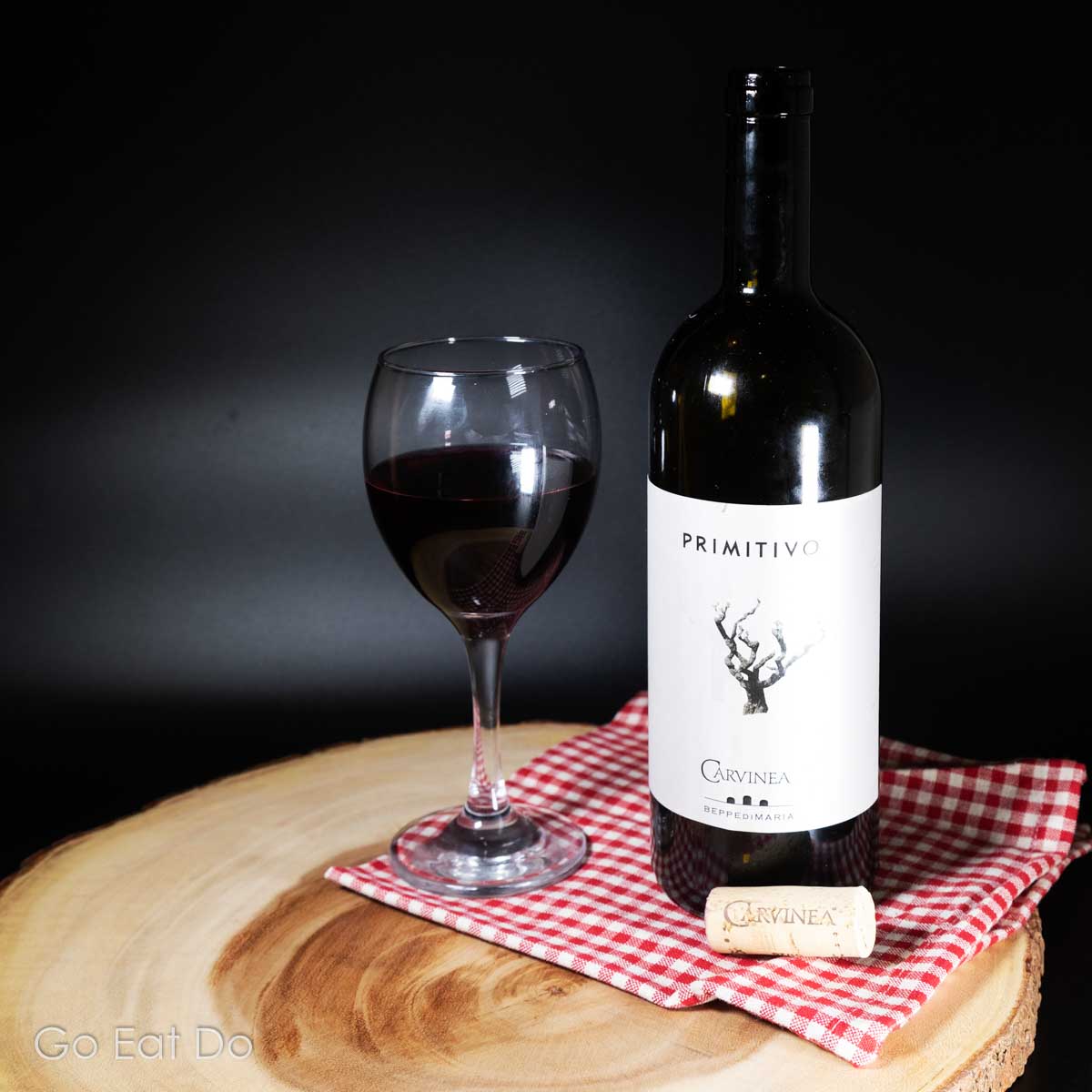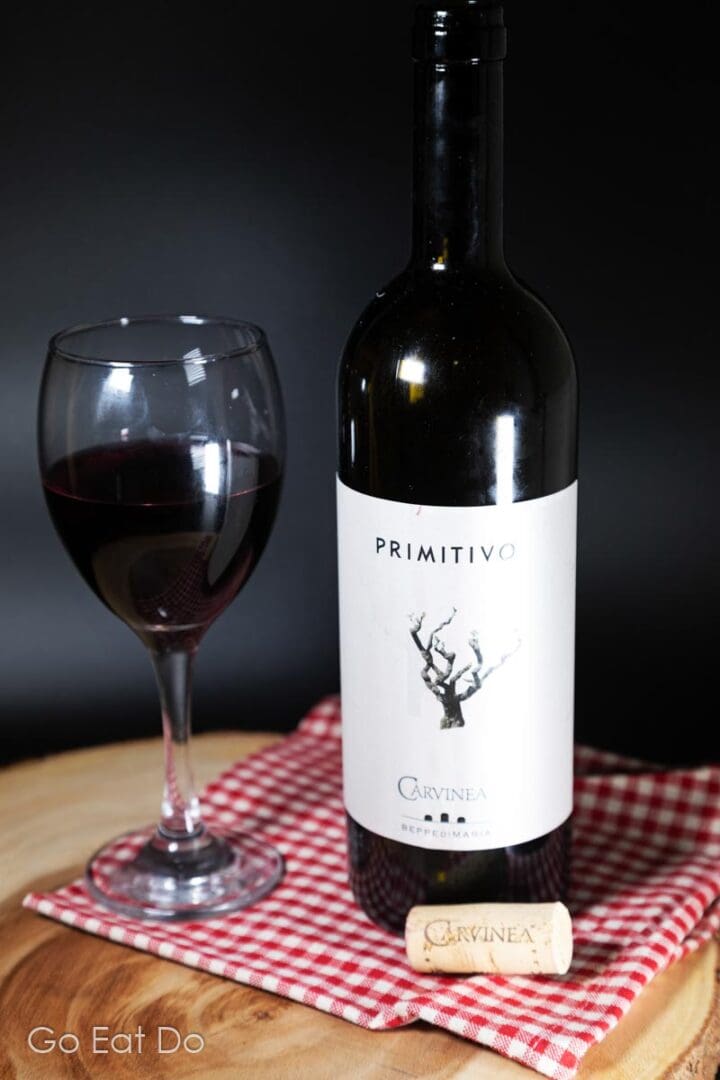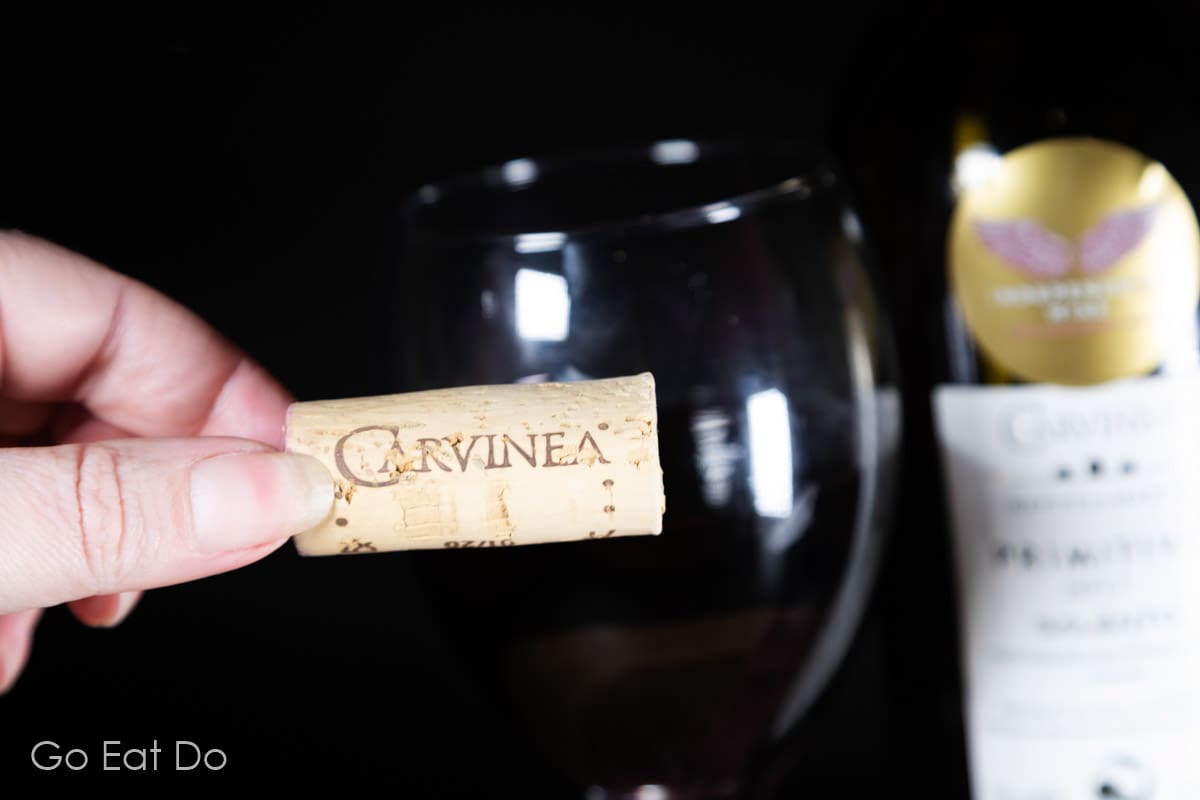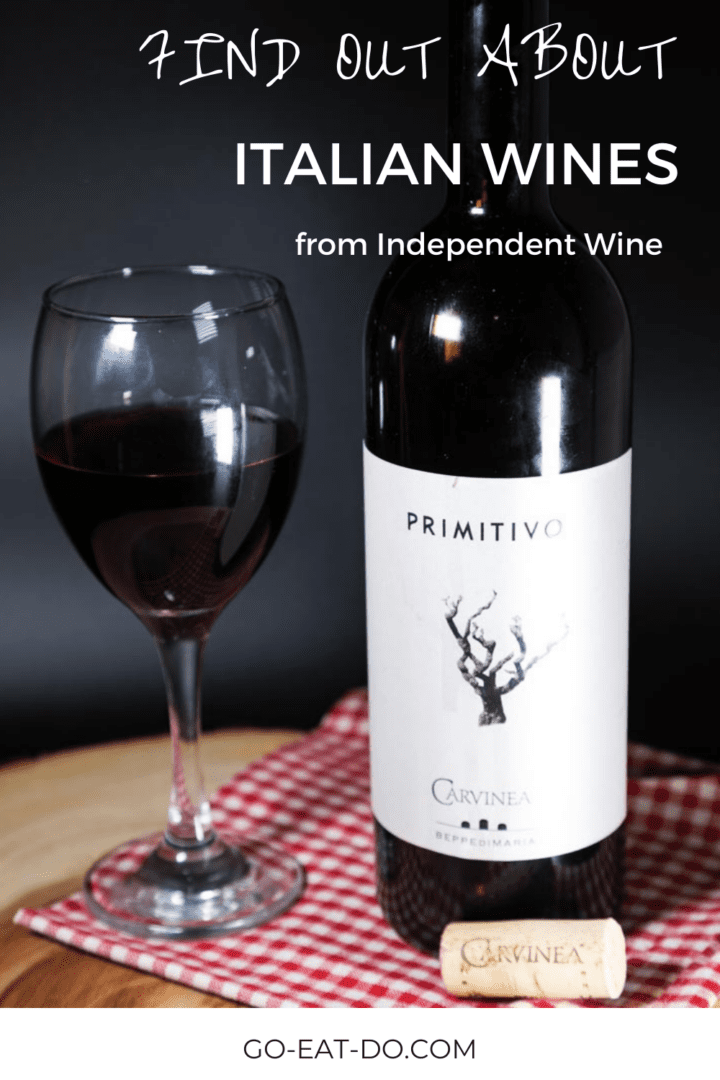Stuart Forster looks at Italian wines from Independent Wine, particularly enjoying the Carnivea Organic Primitivo, and discovers some surprising facts about winemaking in Italy.
Disclosure: I was gifted two bottles of Italian wine by Independent Wine, who have not reviewed or edited this article. Some of the links below and banners are affiliate links, meaning, at no additional cost to you, I will earn a commission if you click through and make a purchase.
Buying Italian wines in the UK
I’ve enjoyed some outstanding Italian wines while travelling and dining out in Italy.
Am I confident that I’d be able to choose a good bottle in the wine aisles of a supermarket? Would I be certain of selecting a quality Italian wine while browsing the shelves of my local wine merchant? In all honesty, no.
Despite being a keen wine drinker, I know relatively little about wine production in Italy.

More than 300,000 wineries
While browsing the Independent Wine website I was surprised to read that Italy has more than 381,000 wineries.
The nation has a population of approximately 60.36 million people. That means, on average, there’s one winery for every 158.4 people. Wow!
The simple maths required to reach that conclusion suggests wine production plays a significant role in Italian social and economic life.
My online research indicates that 7.67 million tonnes of wine-producing grapes were harvested in Italy in 2018. That resulted in the production of 7.56 billion bottles of wine.

Italian wines from Independent Wine
Independent Wine selects premium Italian wines direct from boutique wineries and ships them to its Edinburgh warehouse. From there they are couriered across the United Kingdom, usually ensuring next-day delivery to mainland addresses.
The company’s focus is Italian wines. They’re shipped to Edinburgh between October and April to avoid heat damage during transit. The bottles are then stored on their sides in a stone warehouse where the temperature remains between 10°C and 16°C throughout the year.

Nebbiolo d’Alba
One of the bottles that I was sent was a Demarie Nebbiolo d’Alba DOC 2017. The same grape varietal, Nebbiolo, is used in making Barbaresco and Barolo wines.
This wine can be aged for up to five years before opening. Liquorice and juniper count among its aromas.
The Paolo Demarie vineyard is at Vezza d’Alba in Roero, where the grapes are harvested by hand.
The estate’s energy-efficient cellar was opened in 2013. It features rooftop solar panels and a biomass boiler. Water used during the winemaking process is filtered before being used to hydrate plants.
Carnivea Organic Primitivo
Carnivea Organic Primitivo is rich and deep in flavour. It’s dominated by dark fruit, chocolate and a hint of tobacco. I thoroughly enjoyed sipping this wine from the Apulia region during dinner.
Carnivea Organic Primitivo has been awarded the Gambero Rosso wine guide’s accolade of excellence, the Tre Bicchieri. Literally meaning ‘three glasses’, the award’s name is the symbol alongside which it is displayed in the annual guidebook.
The Carnivea vineyard is near Carovigno. The grapes are harvested and then fermented with their skins in stainless steel tanks for 20 days. New French oak barrels then impart spicy notes and a hint of smoke during maturation.
Full-bodied, this Primitivo has a long finish and was a joy to drink.
Information about Italian wine
Don’t yet know the difference between a Barolo and a Brunello? Want to understand more about Italian wine and winemaking in Italy? Check out the blog plus the guides on the Italian Wine Knowledge Base page of Independent Wine’s website.
Beyond those, you may find the following books about Italian wine of interest:
Kerin O’Keefe has written Barolo and Barbaresco: The King and Queen of Italian Wine:

Andrew Cullen and Ryan Anthony McNally are the authors of Decoding Italian Wine: A Beginner’s Guide to Enjoying the Grapes, Regions, Practices and Culture of the ‘Land of Wine’ :

Tony Margiotta wrote Hidden Gems of Italy: An Insider’s Secret Formula to Find Top-Class Italian Wines and Taste La Dolce Vita:



Gambero Rosso produce the authoritative guide to Italian Wines:

Keen to visualise the geography of Italian wine production? You might find the De Long Italian Wine Map useful:

Further information
See the Independent Wine website for information about the company, details of its shipping policy and to browse its shop. The wines can be gift packaged for special occasions.
Stuart Forster, the author of this post, is a travel writer based in North East England. Stuart has visited wineries in many countries outside of Italy.
Thanks for visiting Go Eat Do and reading this post about Italian wines from Independent Wine. Enjoy wine and travel? Here’s a look at the Quinta Sant’ana wine estate near Lisbon in Portugal.
If you enjoyed this post why not sign up for the free Go Eat Do newsletter? It’s a hassle-free way of getting links to posts on a monthly basis.
‘Like’ the Go Eat Do Facebook page to see more photos and content.



